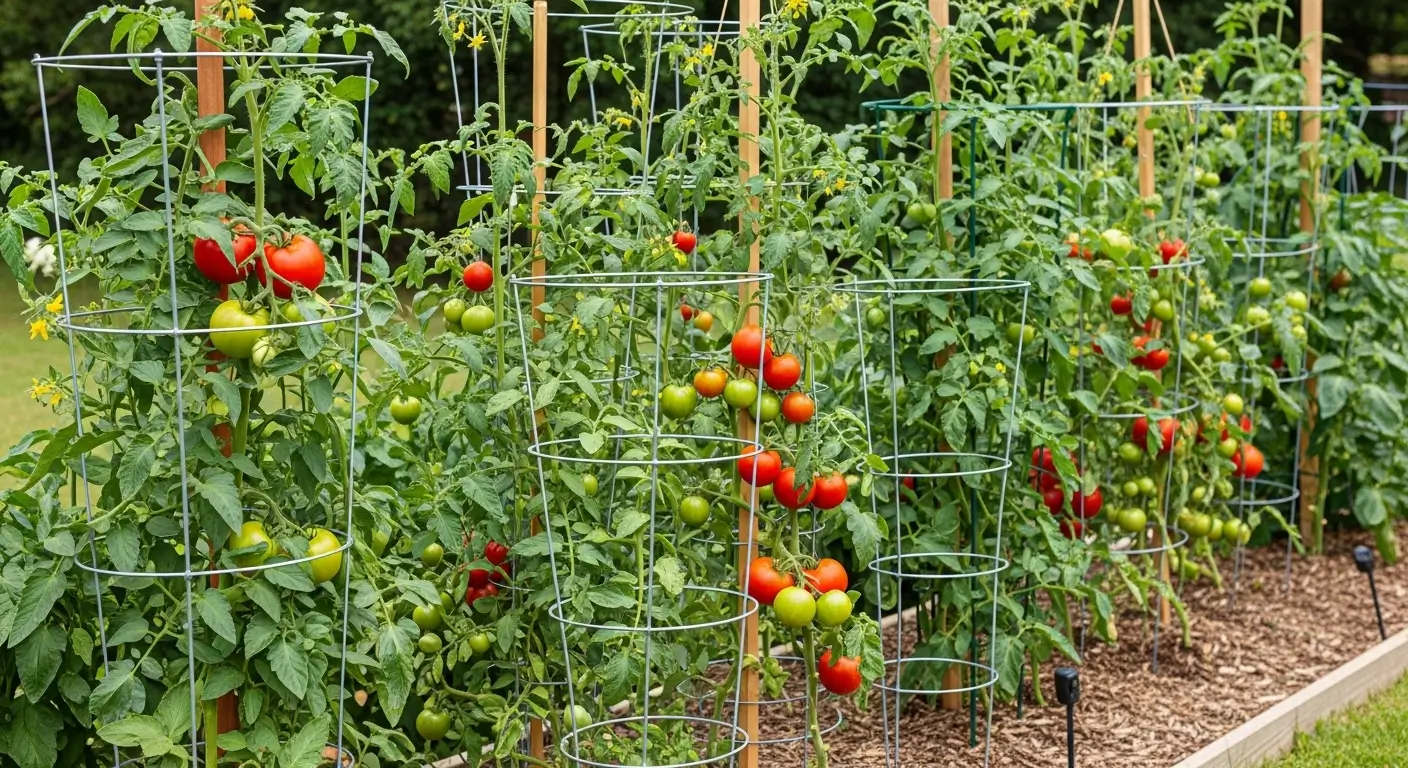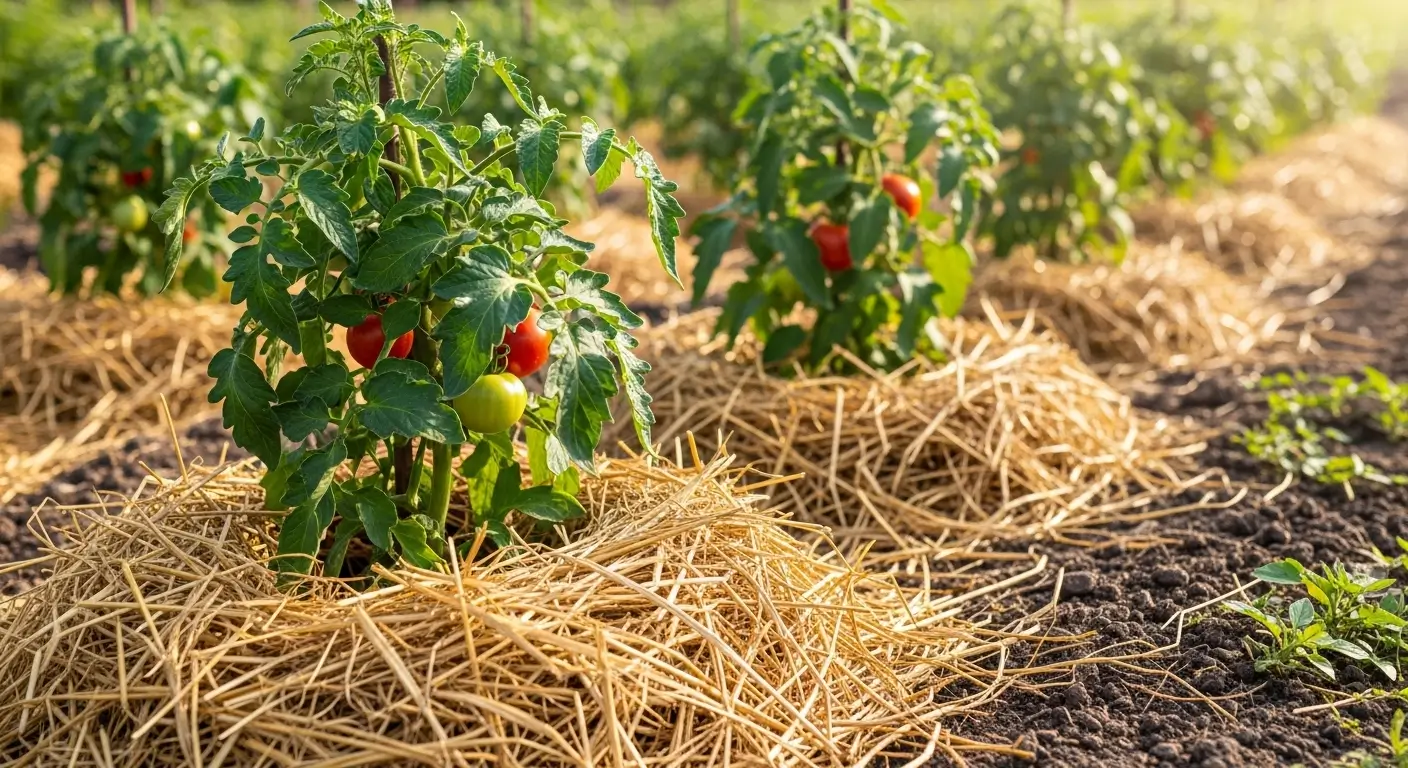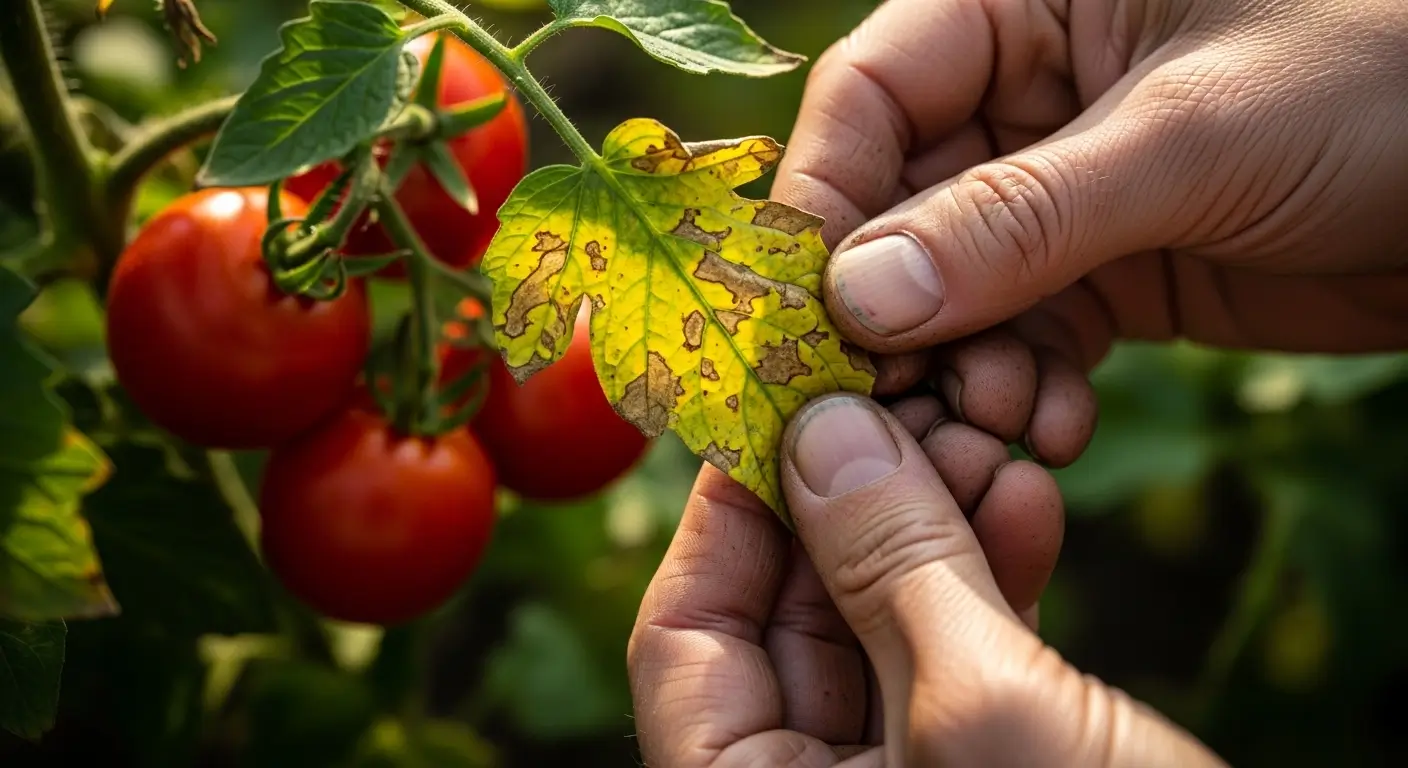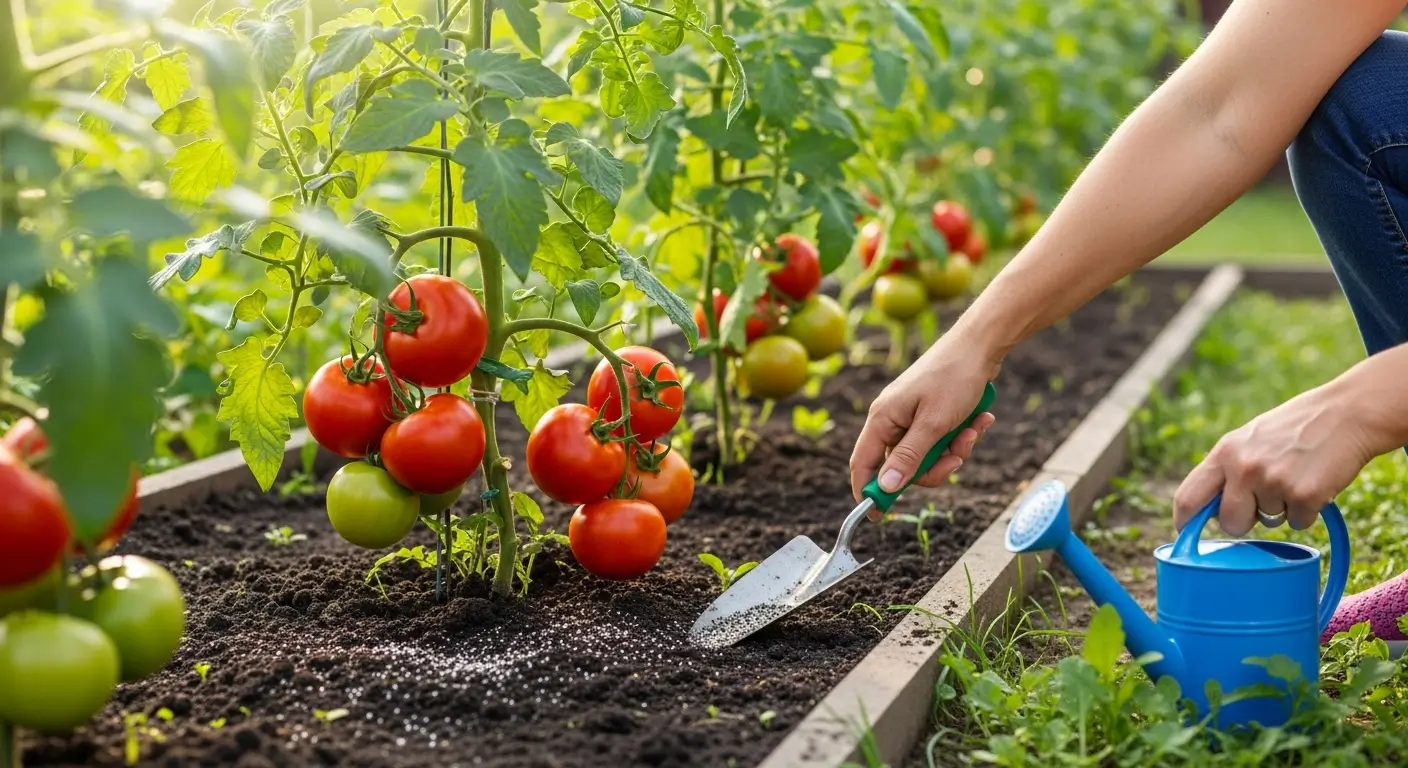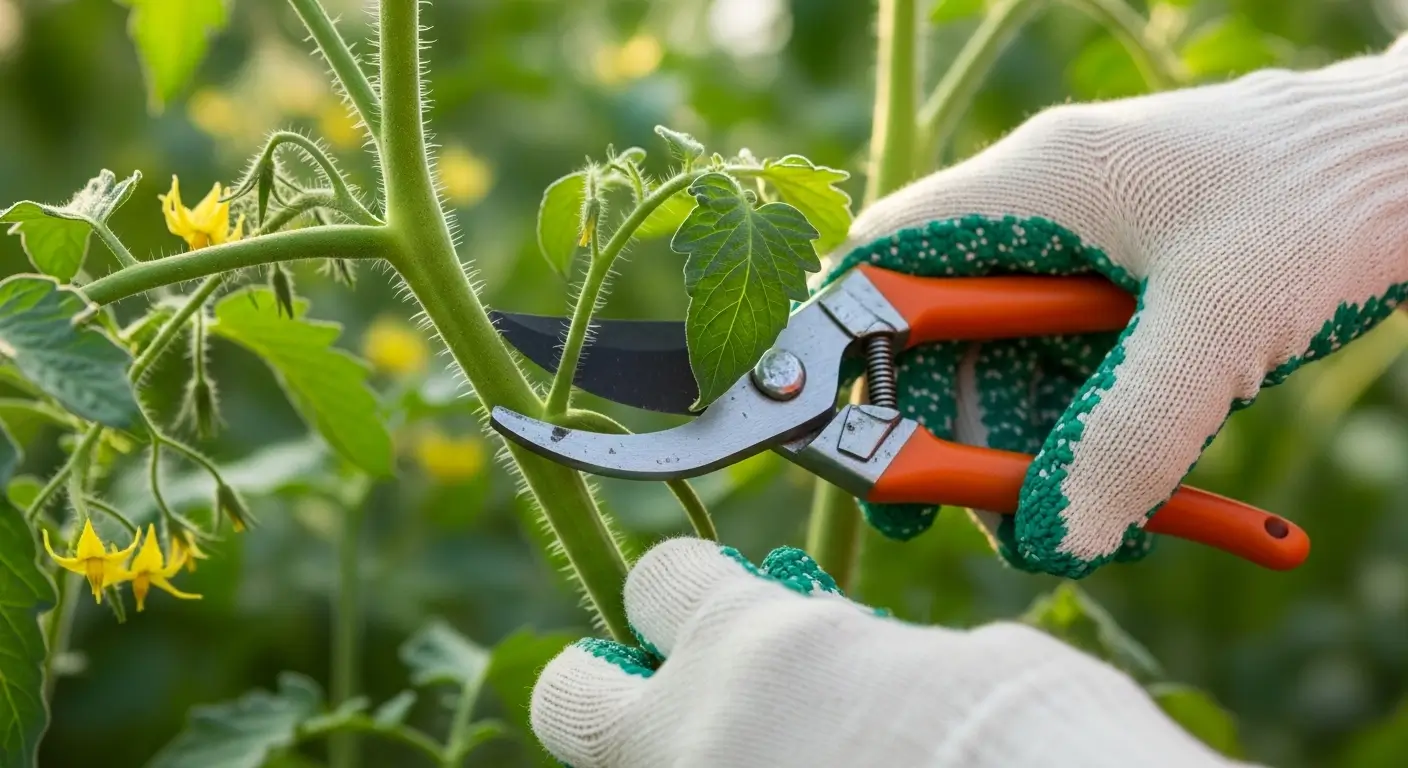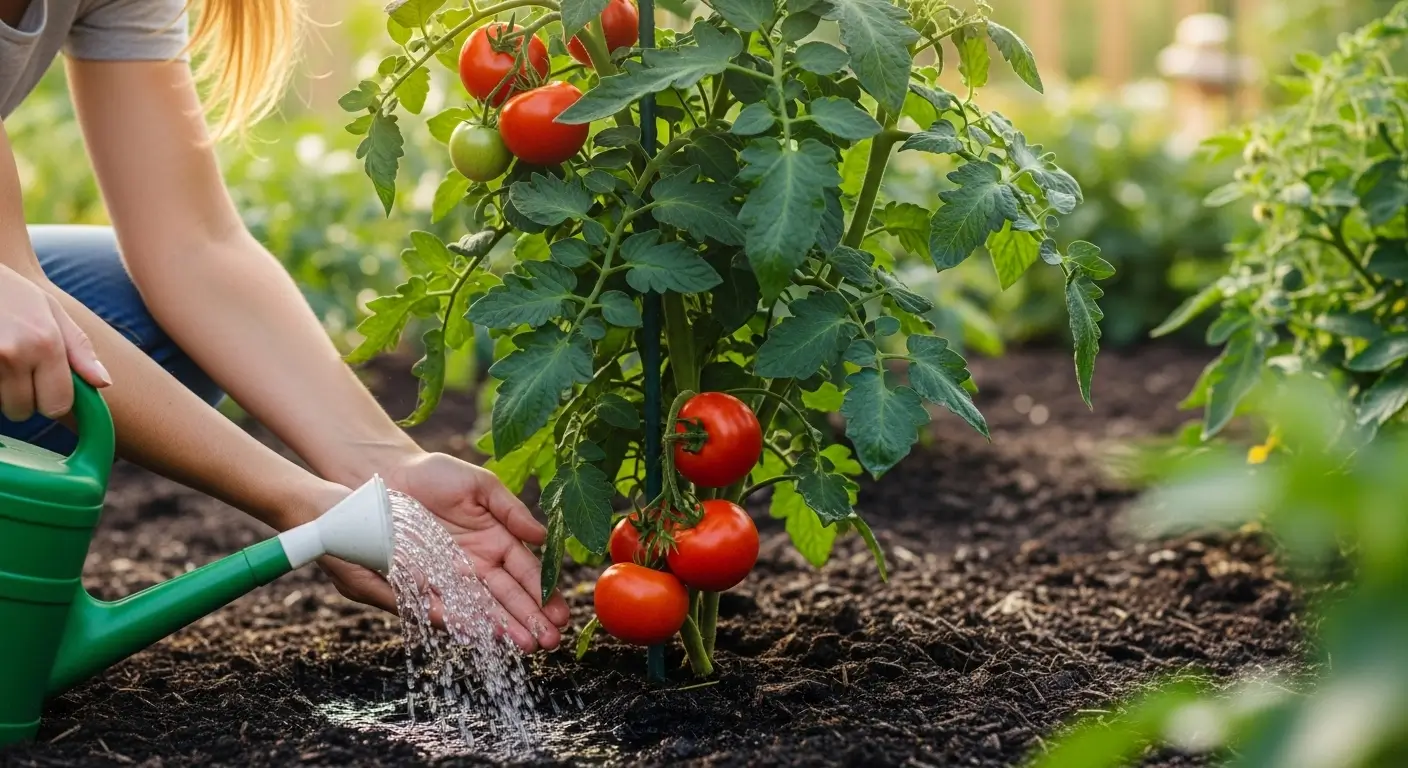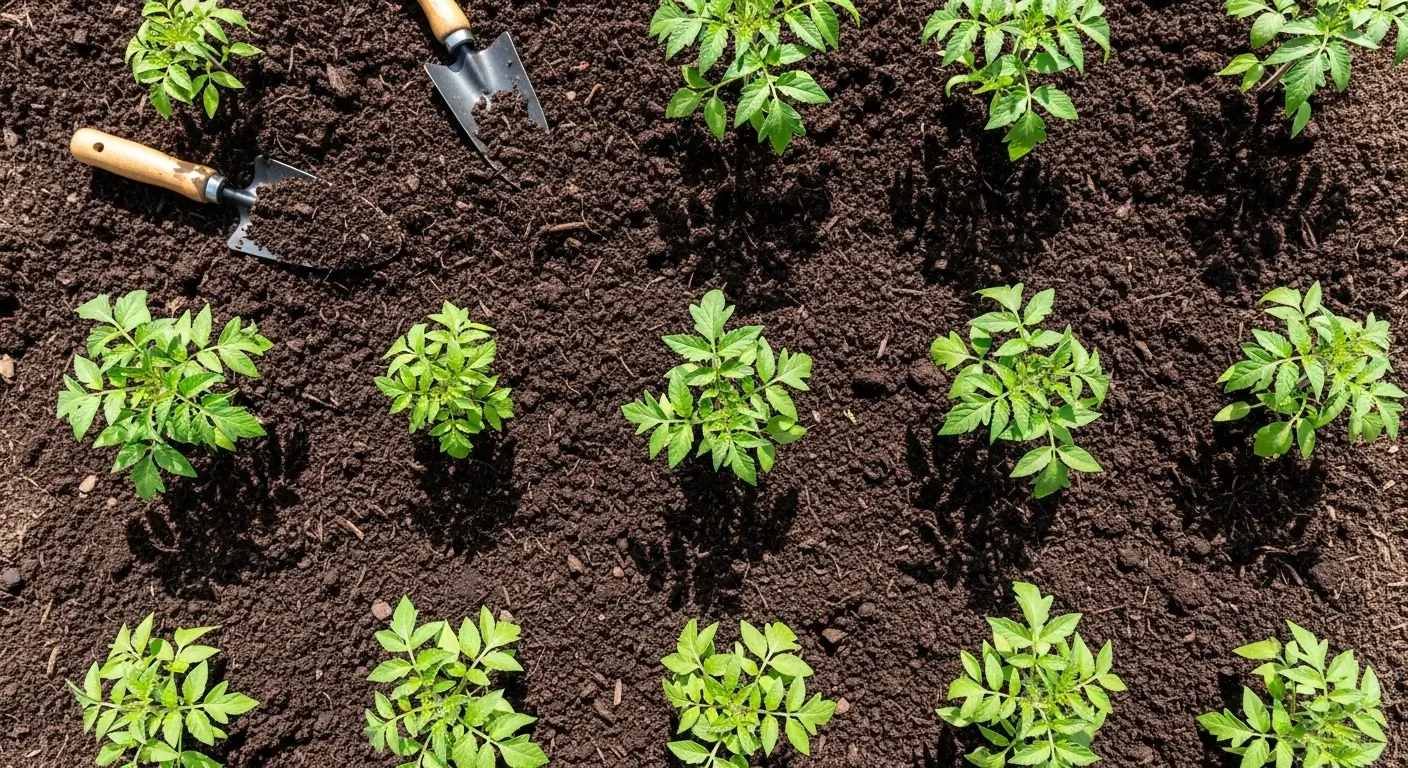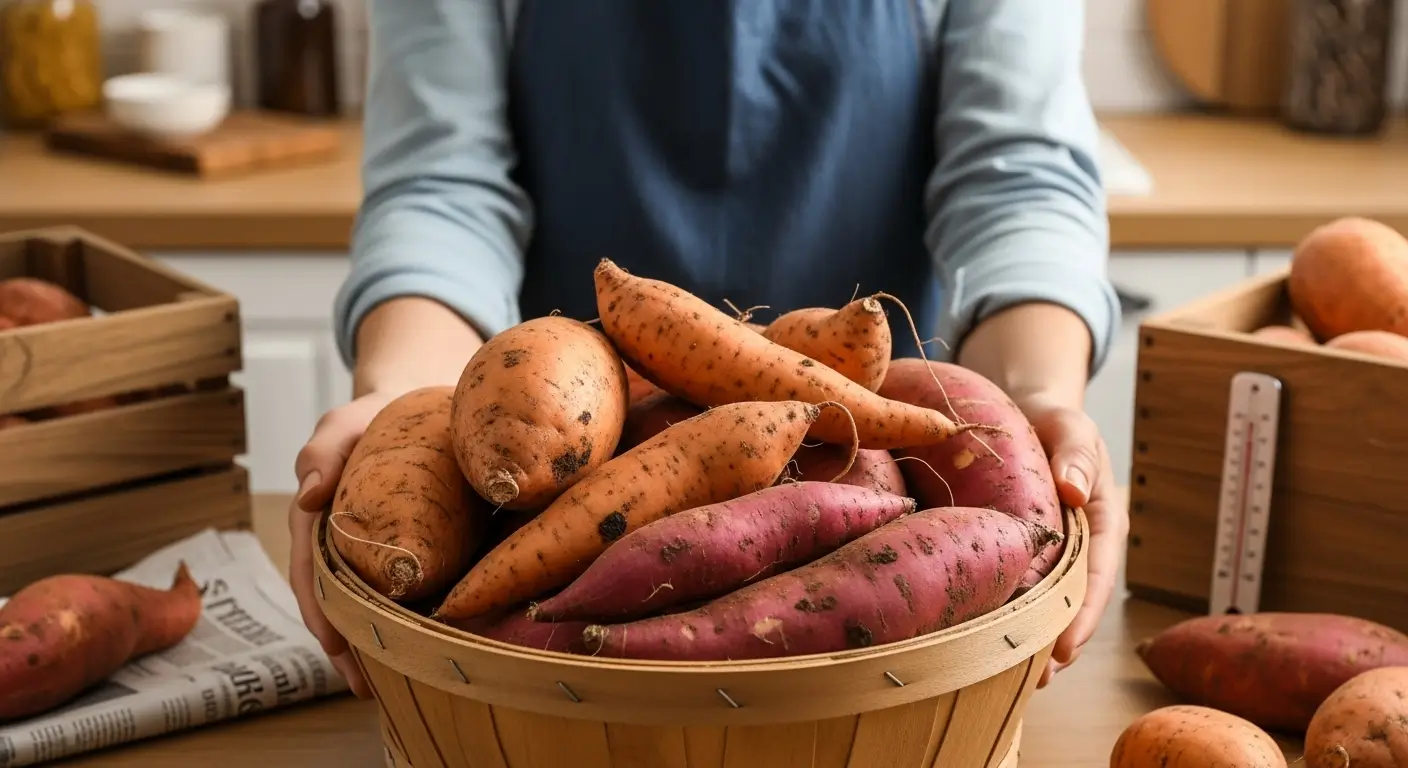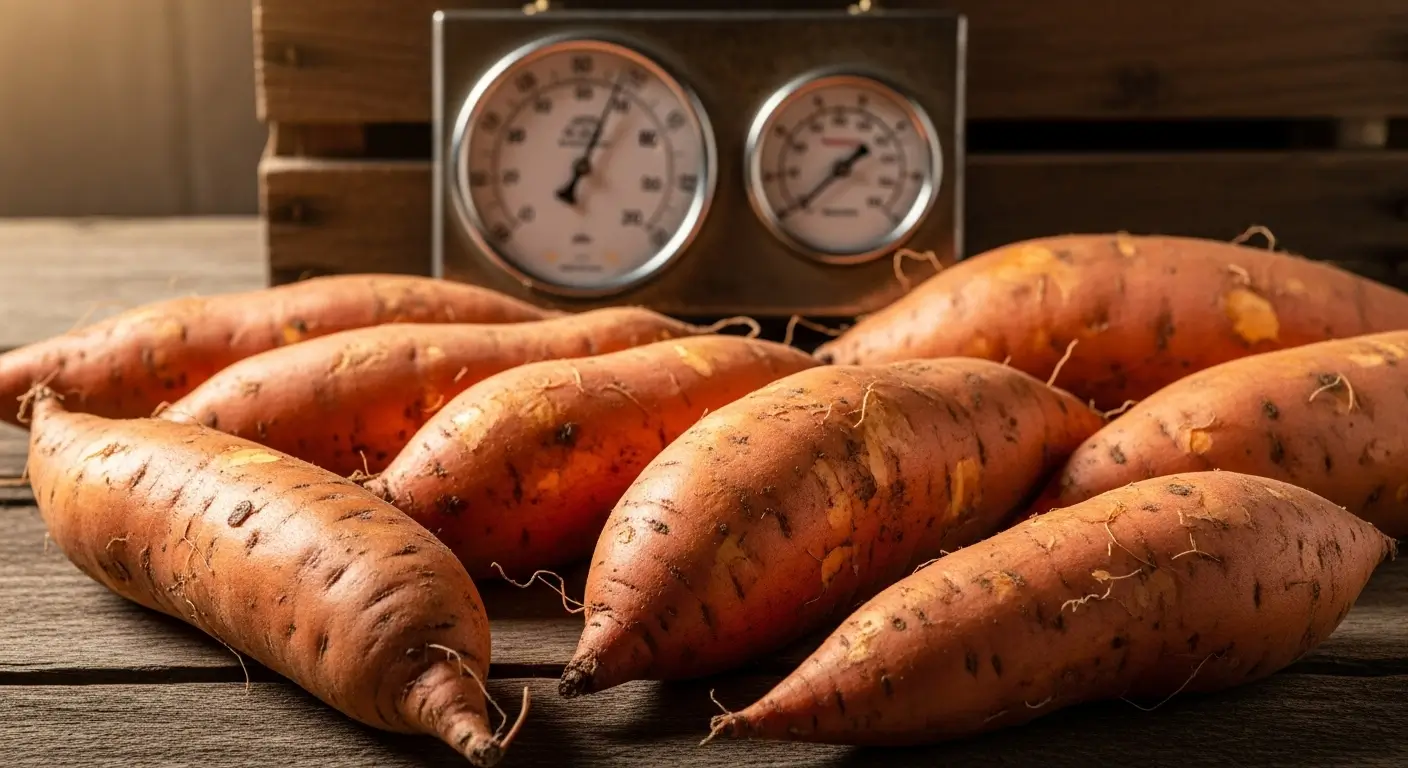Okay, so picture this—it’s the middle of July, I’m out watering my garden, and I glance over at my neighbor’s tomato situation. Holy moly, it looks like a tomato tornado hit their yard! Plants are flopped everywhere, and fruit is rotting on the ground. Honestly? It’s kinda painful to watch.
Meanwhile, my tomatoes stand tall and proud on their trellis, posing for a magazine cover. I’m not bragging (okay, maybe a little), but there’s a method to this madness. And trust me, I didn’t figure this out overnight—I’ve made almost every tomato support mistake you can imagine.
Here’s the deal: a good tomato trellis isn’t just some fancy garden accessory. It’s literally the difference between “Wow, look at all these beautiful tomatoes!” and “Why are all my tomatoes mushy and gross?” Whether you’ve got one lonely cherry tomato plant or you’re going full homesteader with a tomato army, getting your support game right from day one will save you SO much heartache later.
I’m gonna walk you through everything I’ve learned about tomato staking, when to choose cages vs trellises, and some pretty awesome DIY tomato supports that won’t break the bank. When we’re done here, you’ll know exactly which tomato trellis and support ideas will work for your space and sanity level.
Table of Contents
Key Takeaways: What You’ll Master
- Figure out which support system actually makes sense for your tomato babies
- Build your own trellises that work better than expensive store-bought ones
- Know when cages beat trellises (and vice versa) without second-guessing yourself
- Get your supports installed at the perfect time so you’re not wrestling with giant plants later
- Keep everything working all season long without losing your mind
Why Your Tomatoes Desperately Need Support
Look, tomatoes are basically the toddlers of the vegetable world—they’re gonna get into trouble if you don’t keep an eye on them. Left alone, they’ll sprawl everywhere, break stuff, and generally make a mess. Please don’t ask me how I know this… okay, fine, during my second year gardening, I thought my determinate tomatoes would behave themselves. Spoiler: they did not.
Here’s why tomato staking actually matters (and it’s not just because it looks prettier):
Nobody Wants Sick Plants: When your tomatoes are flopping around on the ground, they’re basically rolling out the red carpet for every fungal disease in the neighborhood. I’ve watched entire crops get wiped out because the plants couldn’t breathe properly. Getting them off the ground keeps the air moving and the leaves happier. According to University of Minnesota Extension research, proper support significantly reduces fungal disease issues in home tomato gardens.
Treasure Hunt Harvesting Sucks: Ever tried finding ripe tomatoes in a jungle of collapsed vines? It’s like the world’s most frustrating Easter egg hunt. With a decent trellis, you can see your tomatoes and grab them without playing Twister with your plants.
More Plants, Less Space: Growing up instead of out is a game-changer. My little 4×8 raised bed can fit twice as many plants when I go vertical. It’s like getting a bigger garden without actually having a bigger garden.
Perfect Tomatoes: Tomatoes sitting on the ground turn into bug buffets and rot magnets. Plus, they get all weird and splotchy. Nobody wants ugly tomatoes.
Understanding Your Tomato Types: The Foundation of Support Decisions
Alright, before we dive into the fun stuff, you gotta know what you’re dealing with. Not all tomatoes are the same; treating them like they are is a recipe for disaster.
Determinate Tomatoes: These are like the well-behaved kids in class. They grow to about 3-4 feet, do their thing, and call it a day. Most of their fruit ripens around the same time, which is fantastic if you plan to make a ton of sauce. These guys usually don’t need anything too crazy—a good cage or simple stake does the trick.
Indeterminate Tomatoes: Oh boy, these are the overachievers. They keep growing until Jack Frost shows up at the party. Some of mine have gotten ridiculously tall—we’re talking 8 feet! These vigorous growers absolutely need serious support, or they’ll take over your entire garden. If you wanna know more about picking between these types and what works best for your goals, I’ve got all the details in my guide to determinate vs indeterminate tomatoes.
Semi-Determinate: These are the middle children—bigger than determinates but not as crazy as indeterminates. They’re pretty chill to work with.
Knowing which type you’ve got helps you avoid my early mistake of putting tiny cages around monster plants. Let’s say it looked like a tomato explosion by August, and not in a good way.
Cage vs Trellis for Tomatoes: Making the Right Choice
This is hands-down the question I get asked most, and honestly? Both have their place. It’s kinda like asking whether you should use a fork or a spoon—depends what you’re eating, right?
When Tomato Cages Work Best
Cages are perfect for those “set it and forget it” gardeners (no judgment—we all have busy lives). I use heavy-duty cages for my paste tomatoes yearly, and they’re fantastic.
Why cages rock:
- Super easy to plop down and walk away
- They hug your plant from all sides
- Perfect for those compact, bushy types
- Once they’re in, you’re basically done
Where cages fall short:
- Good ones cost a fortune (cheap ones are basically garden decorations)
- They take up a ton of storage space
- Tall plants will laugh at them and keep growing
- Good luck reaching the tomatoes in the middle of a big plant
Here’s a pro tip I learned the hard way: those flimsy wire cages from the big box stores? Skip ’em. They’re about as useful as a chocolate teapot. If you’re going the cage route, invest in the tall, sturdy ones, or you’ll be buying new ones every year.
When Trellises Are Your Best Bet
Trellis systems are where things get interesting, especially for those monster indeterminate varieties. My current favorite setup is a strong trellis with string supports—it’s crazy effective and won’t empty your wallet.
Why trellises are awesome:
- Perfect for those skyscraper tomatoes
- You can fit more plants in less space
- Way easier to customize for your weird garden layout
- Better airflow than being trapped in a cage
- Actually possible to harvest without gymnastics
The trellis downsides:
- Takes a bit more work upfront
- You gotta check on them and adjust things
- There’s definitely a learning curve
- Might need tweaking as the season goes on
Real talk? I use both in my garden. Cherry tomatoes get the cage treatment, while my big beefsteak and heirloom varieties get the whole trellis experience.
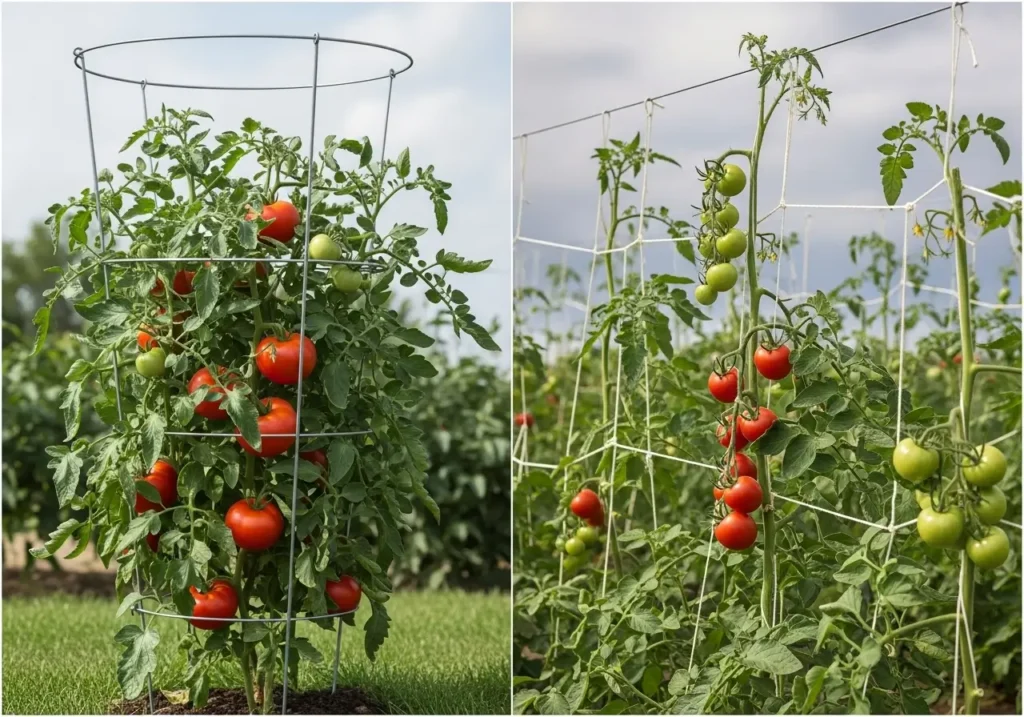
Look, I know choosing between all these options can feel overwhelming—trust me, I’ve been there! That’s why I put together this quick tool to help you figure out exactly what’ll work best for your specific situation. It takes like two minutes and will save you from making the same mistakes I did when I was starting out.
🍅 Find Your Perfect Tomato Support System
Answer a few quick questions to discover which trellis or cage system works best for your garden!
What type of tomatoes are you growing?
How much garden space do you have?
What’s your maintenance preference?
What’s your budget preference?
Now that you know what type of support system makes the most sense for your setup, let’s dive into how to actually build some of these systems without breaking the bank.
DIY Tomato Supports: Building Systems That Actually Work
Okay, this is where we get to the enjoyable part—making your own stuff that actually works better than the expensive store versions. I’ve tried every DIY tomato support idea on Pinterest (some were disasters, but some were genius), and these are the winners.
The T-Post and Wire Trellis System
This is my absolute favorite setup for rows of indeterminate tomatoes. It’s tough enough to handle Midwest storms and costs way less than fancy commercial systems.
What you’ll need:
- 6-foot T-posts (one every 6-8 feet or so)
- Heavy wire or welded wire mesh
- Wire clips or zip ties
- Post driver (or a really good sledgehammer and some patience)
Here’s how it works: I pound those T-posts about 18 inches deep, then run wire horizontally every foot up to about 5 feet high. The plants grow through the wire squares and get support at multiple levels. What I love most is that it grows with your plants throughout the season.
The String Trellis Method
I picked this one up from some European growers, and it’s brilliant for greenhouse growing or if you’ve got a protected garden spot. It doesn’t look very easy, but it’s actually pretty simple once you get the hang of it.
How to set it up:
- Get a horizontal wire or beam about 7-8 feet high
- Tie thick garden string to the support above each plant
- Anchor the other end to a ground stake or the plant base
- Every week, gently twist the growing plant around the string
The trick is using a rough, thick string that the plant can actually grip. I go with jute or hemp—smooth nylon is basically useless for this.
The Cattle Panel Arch System
If you’re dealing with multiple rows and want something that looks pretty cool, cattle panel arches are where it’s at. I built mine three years ago, and it’s still rock solid.
Here’s the deal:
- Grab some 16-foot cattle panels and bend them into arches
- Secure with rebar stakes driven through the panel ends
- Space them about 4-6 feet apart
- Connect with a horizontal wire for extra stability
This creates this excellent tunnel effect that tomatoes absolutely love, plus it’s surprisingly affordable when you break down the cost per plant. Bonus: It looks way more professional than it actually is.
Professional Installation Tips That Make All the Difference
Getting your tomato trellis installed right from the start saves you from wanting to throw things later. I’ve learned these lessons through plenty of “learning experiences” (spectacular failures).
Timing Your Installation
Install your supports when you plant, not when your plants are already falling over. I tried putting cages around 3-foot-tall plants once—it was like trying to put a sweater on an angry octopus. Not fun.
For transplants, get your support system ready before or right after planting. If you’re starting from seed, wait until they’re about 6-8 inches tall but still manageable.
Foundation and Stability Secrets
Wind is basically the arch-nemesis of tomato supports. Living in Illinois, I’ve seen summer storms flatten poorly installed systems in minutes. Here’s what actually works:
- Bury posts deep—at least 18 inches in solid soil
- Use concrete for permanent setups if your soil is sandy or loose
- Angle the corner posts slightly outward to fight against wire tension
- Add cross-bracing between posts because extra stability never hurt anyone
Plant Training Techniques
Just putting up a trellis isn’t enough—you gotta teach your plants how to use it. I spend maybe 10 minutes a week during the crazy growing season just guiding and tying plants.
My weekly routine:
- Gently nudge main stems toward their supports
- Tie stems with soft stuff like old t-shirt strips (plant ties work too)
- Pinch off suckers that are growing the wrong way
- Loosen ties as stems get thicker, so they don’t get strangled
The secret is staying on top of it instead of trying to fix everything when your plants look like they’re staging a rebellion.
Seasonal Maintenance: Keeping Your System Strong
A tomato trellis is only as good as the attention you give it. I’ve seen gorgeous setups completely fall apart because people installed them and then basically forgot they existed.
Early Season (May-June)
This is when you’re getting everyone introduced adequately to their supports. I check my plants weekly, gently training new growth and adjusting ties as needed.
I also remove those bottom branches that want to touch the ground—they’re basically highways for bugs and diseases. Usually, anything below the first flower cluster gets the chop.
Mid-Season (July-August)
This is when your support system gets put to the test. Heavy fruit and summer storms can stress even the best-built structures. I walk through weekly looking for loose connections, wobbly posts, or sections that are getting overloaded.
Don’t wait for problems—if something looks sketchy, add more support before it becomes a disaster.
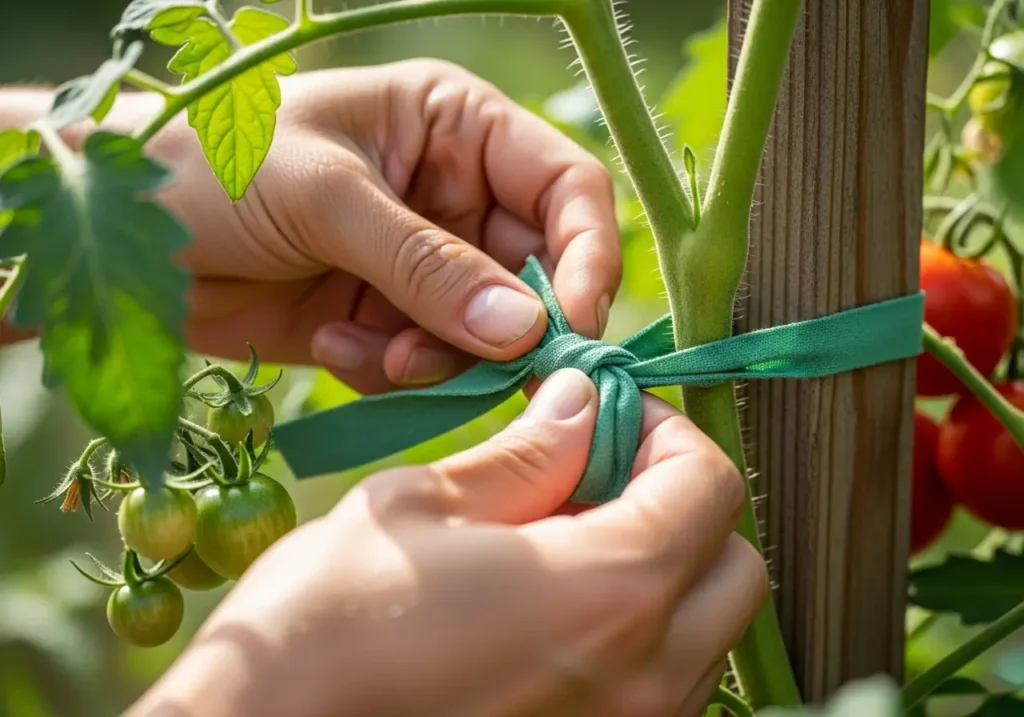
Late Season (September-October)
Your plants are at maximum size, and your trellis is working overtime. I often throw in some temporary supports or guy wires to make sure nothing collapses during those final big harvests.
This is also when I start thinking about cleanup. Getting dead plant stuff out quickly prevents diseases from hanging around for next year.
Troubleshooting Common Trellis Problems
Even with perfect planning, stuff happens. Here are the issues I run into most and how I deal with them:
Leaning or Falling Posts
Usually means you didn’t go deep enough, or your soil is too loose. Fix: add concrete, install guy wires, or just reset the posts deeper. Been there, done that.
Plants Outgrowing Their Support
This happens with those crazy vigorous varieties that just won’t quit growing. I keep bamboo stakes and extra wire handy for emergency height extensions.
Wind Damage
Prevention beats trying to fix stuff after a storm. Install windbreaks, use flexible ties that bend instead of break, and add temporary support when big weather’s coming.
Plants Taking Over
When plants grow way beyond their space, I prune rather than trying to expand everything. Sometimes, less really is more for plant health.
Advanced Tomato Trellis and Support Ideas
Once you’ve got the basics down, these fancier techniques can really level up your tomato game:
The Florida Weave System
This is what commercial growers use—posts and string creating this supportive web around plants. It’s more work, but incredibly effective for getting maximum production from minimum space.

Spiral Cage Systems
For container growing, spiral cages are pretty neat because they expand as plants grow. I use these for growing tomatoes in containers on my deck.
Combination Systems
Don’t be afraid to mix things up! I often start with cages for early support and add trellis elements as plants get bigger and more demanding.
Wrapping Up: Your Path to Tomato Support Success
Look, building a good tomato trellis system doesn’t have to be rocket science or cost a fortune. Start by understanding what kind of tomatoes you’re growing, pick a support method that makes sense for your situation, and install it properly from the get-go. Whether you go DIY or buy something fancy, the key is matching your choice to your actual garden life.
I’ve been tweaking my approach for 15 years now. I’m still learning new tricks every season. The best system is whatever works for your space, your budget, and your patience level.
Investing in proper tomato support pays off with healthier plants, way easier maintenance, and harvests that’ll make your neighbors jealous. If you’re just getting started with tomatoes or want to up your overall game, definitely check out my complete guide to growing tomatoes for all the growing tips you’ll ever need.
So what’s your biggest tomato support challenge right now? I’d love to hear what’s driving you crazy in your garden and help you figure out a solution that works. Please drop a comment below and let’s troubleshoot together!
Tomato Trellis and Support Systems – Frequently Asked Questions
Should I use a cage or trellis for tomatoes?
Use cages for determinate tomatoes that stay compact (3-4 feet tall) and prefer low maintenance. Choose trellises for indeterminate tomatoes that keep growing all season and can reach 6-8 feet tall. Cages work best for bushy varieties, while trellises are perfect for tall, vining tomatoes that need maximum space efficiency.
When should I install tomato supports?
Install tomato supports at planting time, not when plants start falling over. For transplants, set up your support system before or immediately after planting. If direct seeding, install supports when plants are 6-8 inches tall but still manageable. Installing early prevents root damage and makes the job much easier.
How deep should I bury tomato support posts?
Bury support posts at least 18 inches deep in firm soil for stability. In sandy or loose soil, use concrete footings for permanent installations. Proper depth prevents posts from leaning or falling, especially during summer storms when plants are heavy with fruit.
